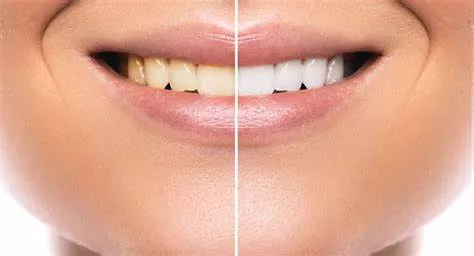LED teeth whitening has gained popularity in recent years as a convenient and seemingly effective way to achieve a brighter smile.
But does this technology truly deliver the promised results? In this comprehensive guide, we will explore the science behind LED teeth whitening, how it works, its effectiveness compared to other whitening methods, potential risks and side effects, and expert recommendations for achieving optimal results.
LED teeth whitening is a cosmetic dental procedure that uses light-emitting diodes (LEDs) to activate a whitening agent applied to the teeth. The process typically involves applying a hydrogen peroxide or carbamide peroxide gel to the teeth, which is then activated by the LED light. The light accelerates the chemical reaction, breaking down stains and discoloration on the tooth surface.
Understanding LED Teeth Whitening Technology
The key component of LED teeth whitening systems is the LED light itself. LED lights emit a specific wavelength of blue light, typically in the range of 460 to 480 nanometers. This wavelength is believed to be optimal for activating the whitening agent without causing harm to the teeth or surrounding tissues.
The whitening agent used in LED treatments is usually in the form of a gel containing hydrogen peroxide or carbamide peroxide. These compounds penetrate the enamel and react with the molecules that cause stains and discoloration. The role of the LED light is to speed up this chemical reaction, resulting in faster and more noticeable whitening effects.
Effectiveness of LED Teeth Whitening
One of the most common questions about LED teeth whitening is whether it really works. The answer depends on several factors, including the concentration of the whitening agent, the duration of treatment, and the initial condition of the teeth.
Research and clinical studies have shown that LED teeth whitening can be effective in reducing surface stains caused by food, beverages, and smoking. However, its effectiveness in whitening deeper stains, such as those caused by aging or certain medications, may vary.
It’s important to note that LED teeth whitening is not a one-time procedure for achieving permanent results. Maintenance treatments or touch-ups may be necessary to sustain the whitening effects over time, especially for individuals who continue to consume staining substances or neglect oral hygiene.
Comparing LED Teeth Whitening to Other Methods
LED teeth whitening is often compared to other whitening methods, such as professional dental whitening treatments and over-the-counter whitening products. Here’s a brief comparison:
Professional Dental Whitening: Dental office whitening treatments typically use higher concentrations of whitening agents and may combine LED light with heat or laser technology for enhanced results.
These treatments are supervised by dental professionals and may provide more significant whitening effects, especially for stubborn stains.
Over-the-Counter Whitening Products: Whitening toothpaste, strips, and trays available at stores often contain lower concentrations of whitening agents compared to professional treatments. While these products can help maintain whiteness and remove mild stains, they may not achieve the same level of whitening as LED treatments or professional whitening.
Potential Risks And Side Effects
Like any dental procedure, LED teeth whitening carries some potential risks and side effects. These may include:
Tooth Sensitivity: Some individuals may experience temporary tooth sensitivity or gum irritation during or after whitening treatments. This sensitivity usually subsides within a few days.
Gum Irritation: Improper application of the whitening gel or prolonged exposure to the LED light can cause gum irritation.
It’s essential to follow the manufacturer’s instructions or seek professional guidance for safe use.
Overuse Caution: Using LED teeth whitening excessively or without proper intervals between treatments can lead to enamel erosion or damage to the tooth structure. It’s crucial to follow recommended treatment schedules and avoid over-whitening.
Expert Recommendations for Optimal Results
To achieve the best results with LED teeth whitening, consider the following expert recommendations:
Consultation with a Dentist: Before undergoing any whitening treatment, consult with your dentist to assess your oral health, discuss your whitening goals, and determine the most suitable whitening approach.
Follow Instructions Carefully: If using an at-home LED whitening kit, carefully follow the instructions provided by the manufacturer or your dental professional. Avoid overuse or improper application.
Monitor Sensitivity: If you experience tooth sensitivity or gum irritation, discontinue the whitening treatment temporarily and consult your dentist.
Maintain Oral Hygiene: Brush and floss regularly, and avoid excessive consumption of staining substances like coffee, tea, and tobacco to prolong whitening results.
Conclution
In conclusion, LED teeth whitening can be an effective option for achieving a brighter smile, especially for surface stains caused by common factors. However, its effectiveness may vary based on individual factors, and proper use and maintenance are crucial for optimal results and oral health. Consulting with a dental professional and following recommended guidelines can help you safely and effectively whiten your teeth using LED technology.

